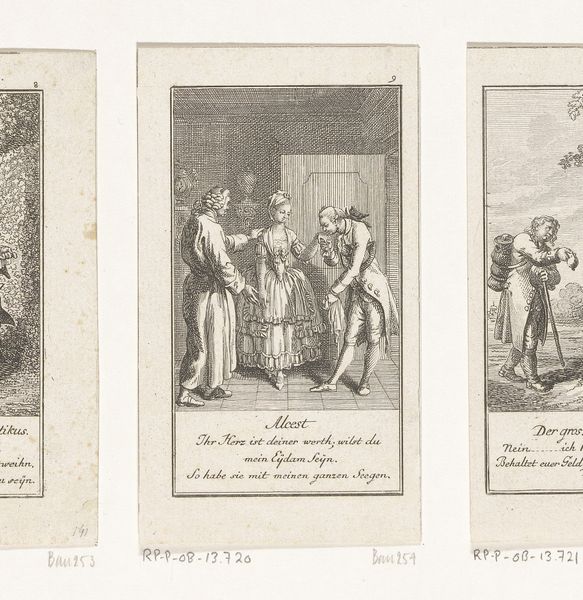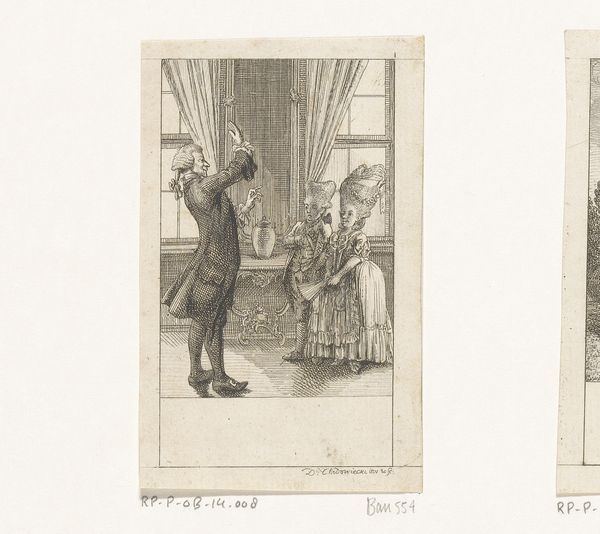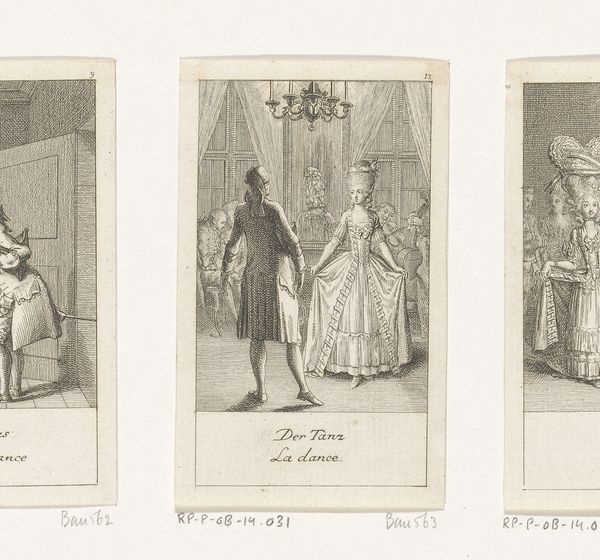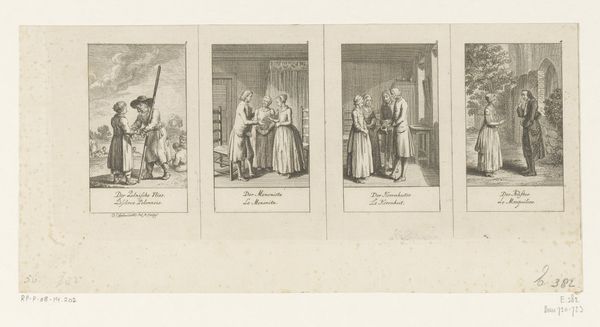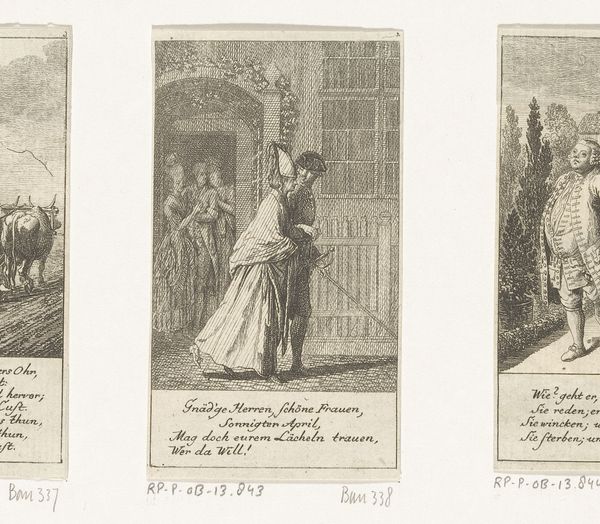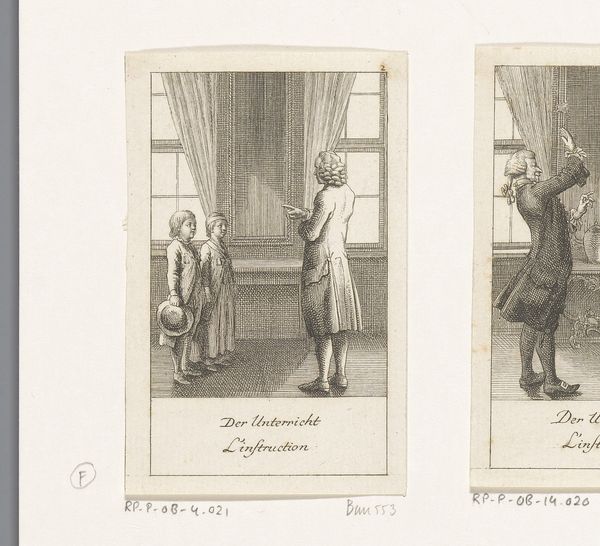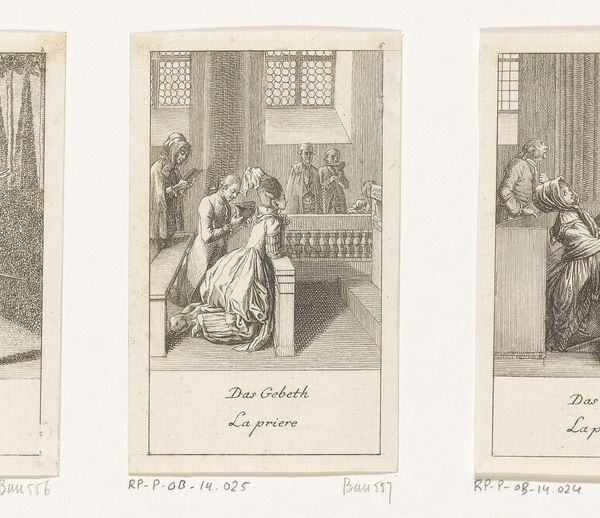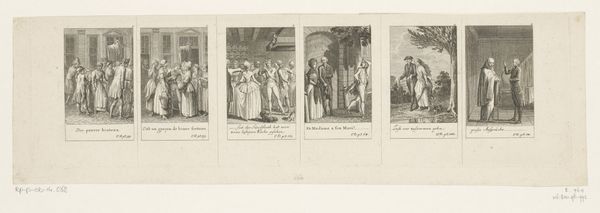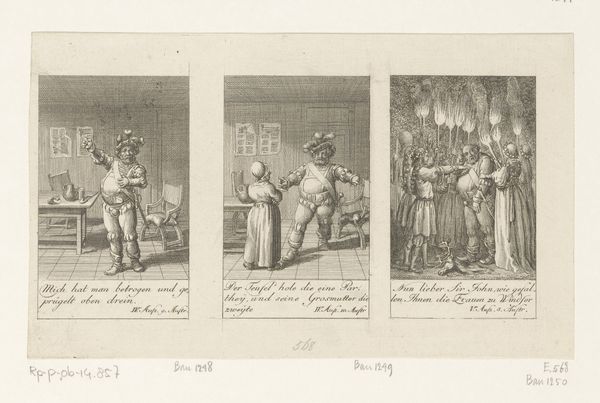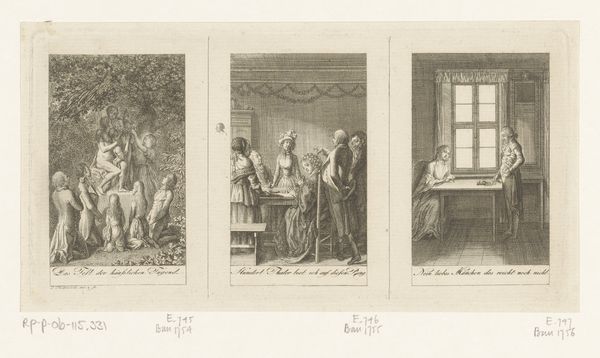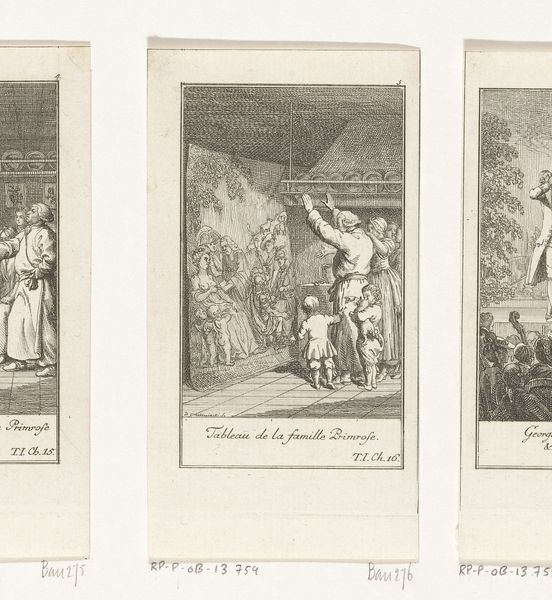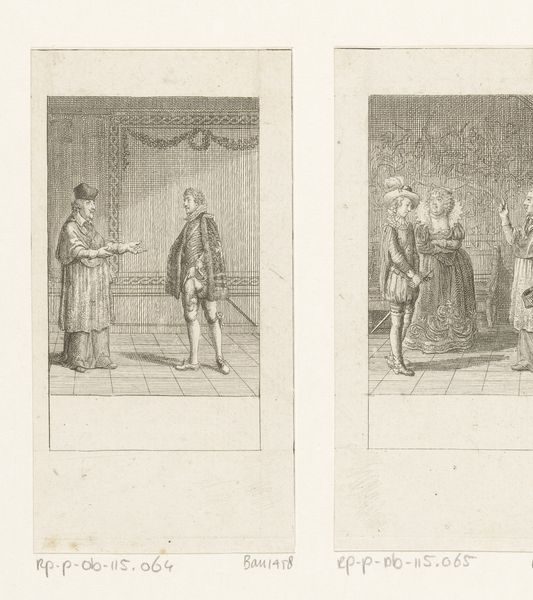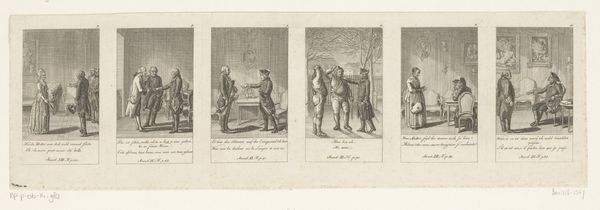
Dimensions: height 90 mm, width 56 mm
Copyright: Rijks Museum: Open Domain
Editor: This is "Twee kinderen krijgen les," or "Two Children Receiving Instruction," by Daniel Nikolaus Chodowiecki, an engraving from 1778. It looks like a scene from a play, all rendered in fine lines. What catches your eye when you look at it? Curator: For me, it's the context of production that’s compelling. Engravings like these were part of a broader print culture, making images and ideas accessible to a wider audience than painted portraits ever could. Consider the materials: the metal plate, the ink, the paper – each playing a role in disseminating knowledge and shaping social values. Editor: So, it’s not just about the image itself, but also about how it was made and who it reached? Curator: Exactly! Think about the labor involved in creating these engravings. The skilled artisans who meticulously etched these lines likely operated within a workshop setting, subject to economic and social pressures of the time. These prints then become commodities, bought and sold, circulating within specific social strata. Editor: That’s fascinating. It’s easy to forget about the people who made art accessible, and the economies involved. Curator: Right. What’s interesting, too, is how an engraving like this challenges traditional notions of "high art." It’s reproducible, functional, and intended for a diverse audience. Does that change how you view its artistic merit? Editor: It makes me consider the value placed on unique, hand-crafted works versus the impact of mass-produced art. I see that "high art" is more about exclusion. Curator: Precisely. Considering the materials, the process, and the social context invites us to question traditional art hierarchies. Editor: I had never considered art like that! It makes me appreciate the engraving for more than just the image. Curator: Absolutely. And that deeper understanding allows us to critically assess the power dynamics embedded within art history.
Comments
No comments
Be the first to comment and join the conversation on the ultimate creative platform.
